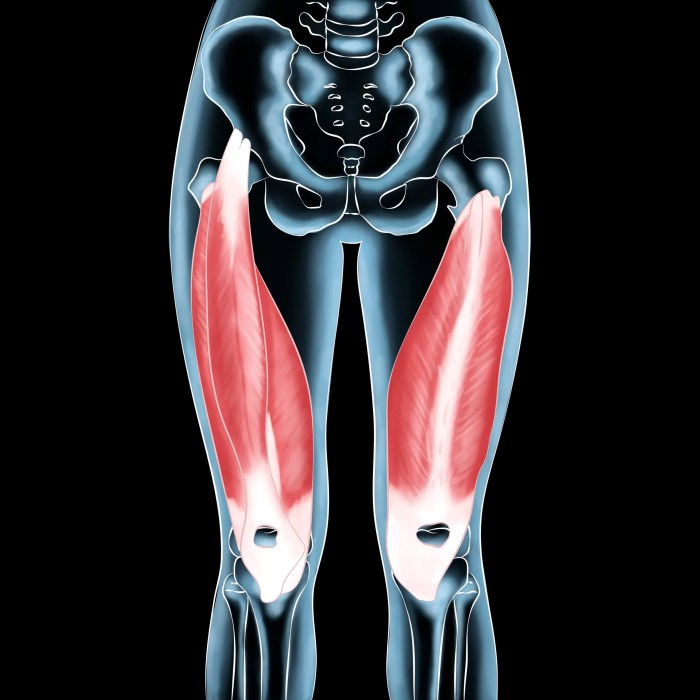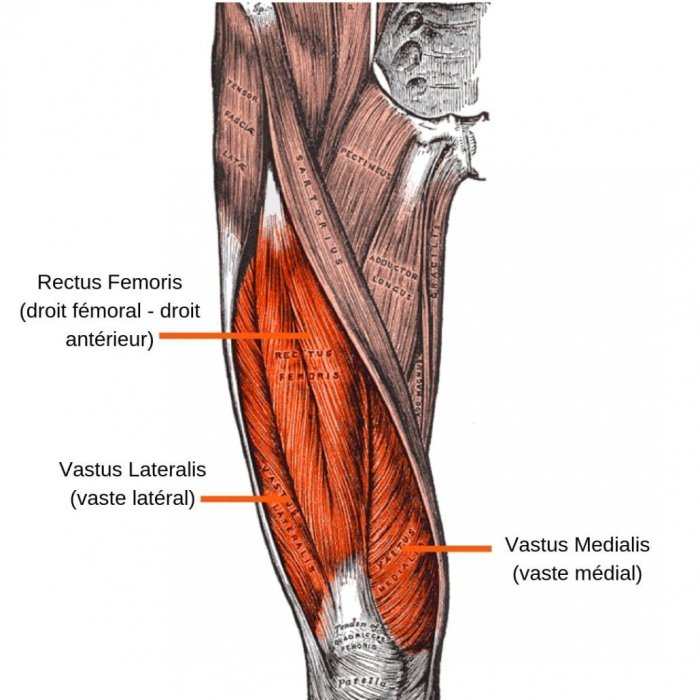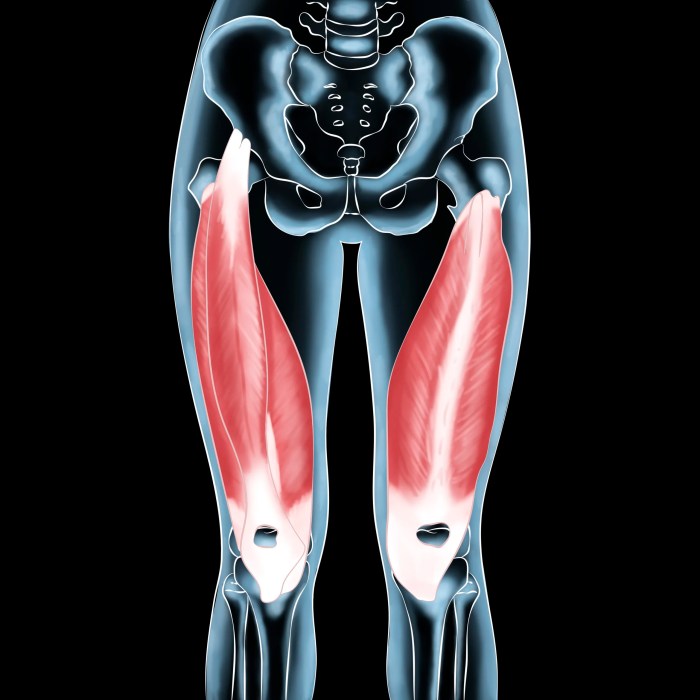5 components of fitness sets the stage for a deep dive into the essential elements of a healthy lifestyle. This isn’t just about looking good; it’s about feeling amazing and achieving peak physical performance. From understanding the basics to crafting personalized workout routines, we’ll explore each component in detail, offering practical advice and insights.
This comprehensive guide will walk you through the 5 essential components of fitness – cardiorespiratory endurance, muscular strength, muscular endurance, flexibility, and body composition. We’ll delve into how each contributes to overall well-being, and how they work together to create a balanced and effective fitness program. Get ready to unlock the secrets to a healthier, stronger, and more vibrant you!
Introduction to the 5 Components of Fitness
The 5 components of fitness are essential elements for achieving overall well-being and optimal health. These components encompass a multifaceted approach to physical development, emphasizing not just strength and endurance, but also flexibility, body composition, and cardiovascular health. Understanding and incorporating all five elements leads to a more robust and resilient physical self.The concept of the 5 components of fitness has evolved over time, with increasing awareness of the interconnectedness of physical attributes.
Early fitness models focused primarily on strength and endurance, but as scientific research progressed, the importance of other components like flexibility and body composition became evident. This holistic understanding is crucial for designing effective fitness programs that promote comprehensive well-being.Incorporating all five components is vital for overall well-being. Focusing solely on one aspect, such as muscular strength, can leave other crucial areas neglected.
A balanced approach, addressing all five components, yields a stronger, healthier, and more resilient individual. A well-rounded fitness program considers all these aspects, creating a more sustainable and comprehensive path to fitness.
Defining the 5 Components
The five components of fitness encompass a broad spectrum of physical capabilities, crucial for a healthy and active lifestyle. They are interdependent, meaning that improvement in one area often positively impacts others. Understanding these components allows for the design of effective fitness routines tailored to individual needs and goals.
| Component | Definition | Importance | Example |
|---|---|---|---|
| Cardiovascular Endurance | The ability of the heart and lungs to deliver oxygen to working muscles during sustained physical activity. | Essential for daily activities, reduces risk of chronic diseases, and improves overall energy levels. | Running a marathon, swimming laps, or cycling for an extended period. |
| Muscular Strength | The ability of a muscle or group of muscles to exert force against resistance. | Important for everyday tasks, improves posture, and supports overall body function. | Lifting weights, doing push-ups, or participating in resistance training exercises. |
| Muscular Endurance | The ability of a muscle or group of muscles to repeatedly exert force without fatigue. | Crucial for activities like sports, work, and daily chores. | Performing multiple repetitions of an exercise, such as sit-ups or squats. |
| Flexibility | The range of motion around a joint. | Essential for injury prevention, improves posture, and enhances athletic performance. | Stretching, yoga, or participating in activities that require a wide range of movement. |
| Body Composition | The proportion of fat, muscle, bone, and other tissues in the body. | Impacts overall health, reduces risk of chronic diseases, and improves physical function. | Maintaining a healthy weight through a balanced diet and regular exercise. |
Cardiorespiratory Endurance
Cardiorespiratory endurance, often referred to as cardiovascular fitness, is the ability of your heart, lungs, and blood vessels to deliver oxygen and nutrients to your muscles during sustained physical activity. It’s a crucial component of overall health and well-being, contributing to better energy levels, improved mood, and a reduced risk of chronic diseases. A strong cardiorespiratory system enables you to perform daily tasks with ease and participate in various activities without undue fatigue.A well-trained cardiorespiratory system is vital for optimal physical function.
This endurance allows your body to efficiently utilize oxygen during prolonged exertion, supporting various bodily processes and enhancing overall health.
Assessing Cardiorespiratory Endurance
Several methods are used to evaluate cardiorespiratory endurance. These assessments aim to measure the body’s ability to sustain physical activity over an extended period. Common methods include the 1.5-mile run test, the step test, and the 12-minute run/walk test. These tests measure the time it takes to complete a specific distance or the number of repetitions of a specific exercise.
Each method provides a quantifiable measure of cardiovascular fitness, aiding in personalized exercise programs.
Activities Improving Cardiorespiratory Endurance
Many activities can enhance cardiorespiratory endurance. Examples include running, swimming, cycling, dancing, and brisk walking. These activities elevate the heart rate and breathing rate, forcing the body to adapt and improve its ability to deliver oxygen to working muscles. Consistency in these activities is key to achieving significant improvements in cardiorespiratory fitness.
Comparing and Contrasting Cardiorespiratory Exercises, 5 components of fitness
Different cardiorespiratory exercises offer varying benefits and challenges. Running, for instance, is a high-impact exercise that can be strenuous on joints, while swimming is a low-impact exercise that is gentler on the body. Cycling is another excellent option, particularly for individuals with joint issues. Choosing the right exercise depends on individual preferences, physical limitations, and desired outcomes.
Consider factors like intensity, duration, and frequency when selecting activities.
Cardiorespiratory Exercise Program Design
| Exercise Type | Description | Benefits | Frequency Recommendations |
|---|---|---|---|
| Running | Continuous, rhythmic movement involving the legs. | Improves cardiovascular health, burns calories, strengthens bones. | 3-4 times per week, with rest days in between. |
| Swimming | Full-body workout using water resistance. | Low-impact, excellent for joint health, improves flexibility. | 2-3 times per week, adjusting based on intensity. |
| Cycling | Movement using a bicycle, either stationary or outdoor. | Low-impact, improves lower body strength, suitable for various fitness levels. | 3-5 times per week, with rest days incorporated. |
| Dancing | Aerobic exercise involving rhythmic movements. | Improves coordination, flexibility, and cardiovascular fitness. | 2-3 times per week, tailored to the intensity of the dance style. |
Designing a safe and effective cardiorespiratory workout program requires careful consideration of individual needs and limitations. Beginners should start with shorter durations and lower intensities, gradually increasing both over time. Incorporating rest days is crucial for muscle recovery and injury prevention. Listen to your body and adjust the program as needed. Consult with a healthcare professional before starting any new exercise program.
A structured program that considers intensity, duration, and frequency is essential for achieving fitness goals. A proper warm-up before each session and a cool-down afterward are also vital for injury prevention and optimal recovery.
Muscular Strength
Muscular strength is the ability of a muscle or group of muscles to exert force against resistance. It’s a crucial component of overall fitness, impacting daily tasks, athletic performance, and even injury prevention. Understanding how to assess, build, and maintain muscular strength is key to a healthier, more active lifestyle.
Methods for Assessing Muscular Strength
Various methods exist for evaluating muscular strength. These methods often involve measuring the maximum force a muscle or muscle group can generate. Common assessments include:
- 1-Repetition Maximum (1RM): This is the maximum weight a person can lift for a single repetition with proper form. It’s a widely used and reliable measure of strength. Multiple sets of progressively heavier weights are usually required to determine the 1RM, ensuring accuracy and safety. A trained professional should oversee these tests for proper form and safety.
- Manual Muscle Testing: This method uses a standardized grading system to assess the strength of specific muscles or muscle groups. Trained professionals can evaluate muscle strength by observing the force and range of motion during various exercises. This is particularly helpful for identifying potential muscle weaknesses or imbalances.
- Isometric Testing: This method involves measuring the force a muscle can produce while maintaining a static position. This type of test is useful for assessing strength in specific postures or movements. Equipment like a dynamometer is used to measure the force produced.
- Strength Machines: Many gyms use machines designed to measure strength. These machines provide objective readings for different exercises, allowing for precise measurements and tracking of progress. Proper calibration and training are essential for reliable results.
Significance of Muscular Strength in Daily Life
Muscular strength is essential for performing everyday tasks. Lifting groceries, climbing stairs, carrying children, and even getting up from a chair all require a certain level of muscular strength. Individuals with sufficient muscular strength experience greater ease and efficiency in their daily routines, reducing the risk of strain or injury. Furthermore, maintaining strength can help with balance and stability, which is important for preventing falls, especially as we age.
Relationship Between Muscular Strength and Other Fitness Components
Muscular strength is intrinsically linked to other fitness components. For example, strong muscles support better posture and balance, which are crucial for cardiovascular endurance. Increased strength can also contribute to better agility and speed in movement. Moreover, strength training can help improve flexibility by promoting proper muscle length and tension.
Understanding the 5 components of fitness is crucial for overall well-being, especially when dealing with conditions like hip, knee, and joint pain, often associated with multiple sclerosis. Proper strength training and flexibility exercises are essential for managing these issues, as detailed in this informative article about hip knee and joint pain in ms. Building a strong foundation of cardiovascular health, balance, and flexibility is key to improving mobility and managing pain, ultimately contributing to a more fulfilling and active lifestyle, even with such challenges.
Focusing on these 5 components can help people achieve their fitness goals.
Exercises for Building Muscular Strength
Building muscular strength requires consistent effort and a well-structured exercise program. Exercises should target specific muscle groups and progressively increase the resistance to challenge the muscles. Proper form is paramount to prevent injuries and maximize results.
Different Exercises for Building Muscular Strength
- Squats: A compound exercise that works the quadriceps, hamstrings, glutes, and core. Various variations exist to target different aspects of the muscle groups. Proper form involves keeping the back straight and the chest up throughout the movement.
- Bench Press: This exercise focuses on the chest muscles (pectorals), shoulders (deltoids), and triceps. Selecting an appropriate weight is crucial to ensure safety and effectiveness.
- Deadlifts: This exercise targets the back, glutes, hamstrings, and core muscles. Maintaining proper form, including a neutral spine, is essential for preventing injury.
- Overhead Press: A compound exercise targeting the shoulders, triceps, and upper back muscles.
- Rows: These exercises target the back muscles (latissimus dorsi, rhomboids, trapezius). There are various row variations, including barbell rows, dumbbell rows, and seated cable rows.
Benefits of Muscular Strength Training
| Benefit | Target Muscles | Recommended Exercises |
|---|---|---|
| Increased strength and power | All major muscle groups | Squats, deadlifts, bench press, overhead press, rows |
| Improved posture and balance | Core muscles, back muscles, legs | Plank, bridges, squats, lunges, deadlifts |
| Enhanced athletic performance | Specific muscle groups based on sport | Sport-specific exercises tailored to the demands of the activity |
| Reduced risk of injury | All major muscle groups | Strength training exercises targeting specific muscle groups and proper warm-up routines |
| Improved metabolism | All major muscle groups | A balanced strength training routine incorporating various exercises |
Muscular Endurance: 5 Components Of Fitness

Muscular endurance is the ability of your muscles to perform repeated contractions over an extended period without fatigue. It’s a crucial component of fitness, significantly impacting daily activities and athletic performance. From carrying groceries to climbing stairs, muscular endurance empowers you to sustain effort without experiencing rapid muscle exhaustion. It’s a vital aspect of overall health and well-being.
Importance in Everyday Activities
Muscular endurance plays a pivotal role in various daily tasks. It allows you to perform repetitive movements without experiencing excessive fatigue. Imagine carrying heavy bags of groceries or pushing a stroller uphill. Without sufficient muscular endurance, these tasks would become strenuous and tiring. Similarly, activities like climbing stairs, gardening, or even playing with children require sustained muscle contractions, highlighting the importance of muscular endurance in everyday life.
Exercises for Improving Muscular Endurance
Numerous exercises effectively enhance muscular endurance. These exercises typically involve repetitive movements and focus on sustained effort rather than maximal strength.
- Bodyweight Exercises: Activities like push-ups, squats, lunges, and planks, when performed in sets and repetitions, develop muscular endurance. These exercises use your body weight as resistance, making them accessible and adaptable to different fitness levels.
- Cardiovascular Exercises: While primarily focused on cardiovascular health, activities like running, swimming, and cycling also contribute to muscular endurance. The sustained effort required during these exercises builds the ability of your muscles to work continuously.
- Resistance Training: Incorporating resistance training, such as lifting weights with lighter weights for higher repetitions, is another effective approach. This method allows for controlled, sustained muscle contractions over a longer duration.
Difference Between Muscular Strength and Muscular Endurance
While both strength and endurance relate to muscle function, they represent distinct aspects of fitness. Muscular strength is the maximum force a muscle can exert in a single contraction. Muscular endurance, conversely, is the ability of a muscle to perform repeated contractions over an extended period. Think of strength as the peak of a mountain, and endurance as the ability to climb it repeatedly without tiring.
Comparison of Strength and Endurance Exercises
| Exercise | Focus (Strength) | Focus (Endurance) |
|---|---|---|
| Bench Press | Lifting the maximum weight possible for one repetition | Lifting lighter weights for multiple repetitions |
| Pull-ups | Performing as many pull-ups as possible in a single set | Performing pull-ups in multiple sets, aiming for high repetitions |
| Squats | Lifting the maximum weight possible for one repetition | Performing squats in multiple sets, aiming for high repetitions |
| Cycling | Maintaining a high speed for a short period | Maintaining a steady pace for a long duration |
Designing a Safe and Effective Muscular Endurance Workout Program
A safe and effective muscular endurance workout program should be tailored to your individual needs and fitness level. Begin with a warm-up period to prepare your muscles for exercise. Choose exercises that target different muscle groups. Focus on proper form to avoid injuries. Gradually increase the duration and intensity of your workouts over time.
A well-structured program will progressively overload the muscles, stimulating adaptation and improvement in muscular endurance.
Include rest days to allow your muscles to recover and rebuild. Listen to your body and adjust the program as needed. Consulting a healthcare professional or certified fitness trainer is always recommended to ensure safety and proper program design.
Flexibility
Flexibility is a crucial component of overall fitness, encompassing the range of motion around a joint. It plays a vital role in preventing injuries, improving posture, and enhancing athletic performance. Maintaining flexibility is essential for daily activities, from reaching for something on a high shelf to performing complex movements during exercise. This component of fitness is often overlooked, but its importance cannot be understated.
Role in Injury Prevention
Flexibility plays a critical role in injury prevention by allowing muscles and joints to move through their full range of motion without strain. Sufficient flexibility reduces the risk of muscle strains, sprains, and other overuse injuries. When muscles are tight, they are more susceptible to tears and pulls during physical activity. Adequate flexibility helps to maintain joint health, preventing stiffness and pain associated with aging and repetitive movements.
Stretching Techniques
Various stretching techniques can be employed to improve flexibility. Consistent practice is key to achieving and maintaining a healthy range of motion.
Static vs. Dynamic Stretching
Static stretching involves holding a stretch for a period of time, typically 15-30 seconds. Dynamic stretching, on the other hand, involves controlled movements that gradually increase the range of motion. Both techniques are beneficial, but their applications differ. Static stretching is generally more effective for improving overall flexibility, while dynamic stretching is often used to prepare the body for physical activity.
Flexibility Exercises
Flexibility exercises can be tailored to target specific muscle groups. The following examples demonstrate how to incorporate stretching into a fitness routine.
Thinking about the 5 components of fitness? Fueling your body right is key, and incorporating high protein low carb foods like lean meats and fish can be a game changer. High protein low carb foods help support muscle growth and repair, which is crucial for strength training and overall fitness. Ultimately, the 5 components of fitness – cardiovascular endurance, muscular strength, flexibility, body composition, and balance – all work together for a healthy lifestyle.
Examples of Flexibility Exercises
| Exercise | Target Muscles | Benefits |
|---|---|---|
| Hamstring Stretch | Hamstrings, lower back | Improves flexibility in the posterior chain, reducing lower back pain and improving posture. |
| Quadriceps Stretch | Quadriceps, hip flexors | Increases range of motion in the hips and knees, important for activities like running and cycling. |
| Triceps Stretch | Triceps | Improves flexibility in the upper body, alleviating tension in the shoulder and upper back. |
| Torso Twist | Abdominals, obliques | Enhances core stability and flexibility, improving posture and reducing back pain. |
| Calf Stretch | Calf muscles | Improves flexibility in the lower legs, important for activities like walking and running. |
Body Composition

Body composition refers to the relative proportions of fat mass, bone mass, and muscle mass in the human body. Understanding and maintaining healthy body composition is crucial for overall health and well-being. It’s not just about weight; it’s about the makeup of that weight, impacting everything from energy levels and metabolism to disease risk. A balanced body composition contributes significantly to a healthier lifestyle.
Defining Body Composition and its Significance
Body composition is a critical aspect of health, influencing various physiological functions and disease risks. A healthy body composition generally involves a lower percentage of body fat compared to lean body mass (muscle, bone, organs). This balance directly correlates with improved metabolic function, cardiovascular health, and reduced risk of chronic diseases like type 2 diabetes, heart disease, and certain types of cancer.
Maintaining a healthy body composition is a vital component of a comprehensive health strategy.
Understanding the 5 components of fitness is crucial for overall well-being, but sometimes our focus shifts to specific health concerns like macular telangiectasia eye disease. This condition, which affects the macula, can impact your vision, making maintaining a healthy lifestyle even more important. Fortunately, the 5 components of fitness – cardiovascular endurance, muscular strength, muscular endurance, flexibility, and body composition – still play a vital role in supporting overall health and well-being, even with a health condition like macular telangiectasia eye disease.
By incorporating these components into your routine, you’ll be setting yourself up for success.
Methods for Assessing Body Composition
Various methods are employed to assess body composition, each with its own strengths and limitations. These methods range from simple estimations to sophisticated laboratory procedures. Accuracy and cost-effectiveness vary significantly across the different approaches. Understanding the strengths and weaknesses of each method is essential for making informed decisions about which method to use.
- Skinfold Calipers: This technique involves using calipers to measure the thickness of subcutaneous fat folds at specific locations on the body. While relatively inexpensive and readily available, the accuracy of skinfold measurements can be affected by factors like the skill of the technician and the specific anatomical locations measured. It’s a practical approach for basic assessments but may not provide highly precise results.
- Bioelectrical Impedance Analysis (BIA): This method utilizes the principle of electrical conductivity to estimate body composition. It is a non-invasive and relatively quick technique that is widely used in health clubs and clinics. BIA devices measure the resistance of electrical current passing through the body. Factors such as hydration levels and the individual’s overall body composition can influence the accuracy of BIA measurements.
This method is useful for initial assessments and tracking changes over time.
- Hydrostatic Weighing (Underwater Weighing): This method involves weighing the individual both in air and submerged in water. The difference in weight, along with the individual’s lung volume, is used to calculate body density and, subsequently, body composition. It’s a highly accurate method, but it requires specialized equipment and trained personnel. It can provide detailed body composition data, but it may not be accessible or practical for all individuals.
- Dual-Energy X-ray Absorptiometry (DEXA): This sophisticated method utilizes X-rays to measure bone mineral density and body composition. It is considered one of the most accurate methods for assessing body composition, providing detailed information on fat mass, lean mass, and bone mineral content. DEXA is often used for clinical assessments and research studies, but its higher cost and requirement for specialized equipment limit its widespread use in routine settings.
Relationship Between Body Composition and Health Risks
A high percentage of body fat is frequently associated with an increased risk of various health problems. Individuals with excessive body fat often experience elevated blood pressure, cholesterol levels, and insulin resistance. These factors can contribute to the development of chronic diseases such as type 2 diabetes, heart disease, and certain types of cancer. Conversely, maintaining a healthy body composition can significantly mitigate these risks.
Importance of Balanced Diet and Exercise
A balanced diet and regular exercise are essential for maintaining a healthy body composition. A balanced diet provides the necessary nutrients for the body to function optimally while minimizing excessive caloric intake. Regular exercise helps in building and maintaining muscle mass, which increases the metabolic rate and promotes fat loss. Combining a nutritious diet with a consistent exercise routine is critical for long-term health and well-being.
Body Composition Assessment Methods Table
| Body Composition Method | Description | Accuracy | Advantages/Disadvantages |
|---|---|---|---|
| Skinfold Calipers | Measures subcutaneous fat folds. | Moderate | Affordable, portable; less accurate than DEXA or hydrostatic weighing. |
| Bioelectrical Impedance Analysis (BIA) | Measures electrical impedance through the body. | Moderate | Non-invasive, quick, convenient; accuracy depends on hydration levels. |
| Hydrostatic Weighing | Weighs the individual in air and water. | High | Highly accurate; requires specialized equipment and trained personnel. |
| Dual-Energy X-ray Absorptiometry (DEXA) | Utilizes X-rays to measure bone mineral density and body composition. | Very High | Highly accurate; expensive, requires specialized equipment. |
Interconnectedness of the Components
The five components of fitness—cardiorespiratory endurance, muscular strength, muscular endurance, flexibility, and body composition—are not isolated entities. Instead, they work together synergistically, influencing and supporting one another. A balanced fitness program acknowledges this interconnectedness and strives to improve all aspects of physical well-being. Understanding these relationships is crucial for designing effective and sustainable fitness routines.A holistic approach to fitness recognizes that improving one component often leads to positive changes in others.
For example, building muscular strength can enhance cardiorespiratory endurance, as a stronger body requires less effort to perform physical activities. Similarly, increased flexibility can improve range of motion, benefiting both muscular strength and endurance exercises. This interconnectedness underscores the importance of a comprehensive fitness plan encompassing all five components.
Positive Influences Between Components
A well-rounded fitness program emphasizes the interdependence of the five components. A strong foundation in one area often leads to improvements in others. For instance, increased muscular strength and endurance can lead to improved cardiorespiratory endurance, allowing you to sustain higher-intensity workouts for longer periods. Likewise, better flexibility allows for greater range of motion during exercise, potentially enhancing both muscular strength and endurance.
Body composition, influenced by diet and exercise, can be positively impacted by improvements in the other components, as a healthier lifestyle often results in reduced body fat and increased lean muscle mass.
Creating a Comprehensive Fitness Program
Designing a comprehensive fitness program that addresses all five components requires careful consideration and planning. It’s not simply about choosing activities that target each component in isolation. Instead, the program should integrate exercises that promote a harmonious relationship between them.
Example Program Structure
A well-structured program would incorporate a combination of exercises:
- Cardiorespiratory Endurance: Activities like running, swimming, or cycling are essential for improving heart and lung health. These activities also contribute to muscular endurance, as they require sustained muscle contractions.
- Muscular Strength and Endurance: Resistance training with weights, resistance bands, or bodyweight exercises strengthens muscles, enhancing both strength and endurance. These activities also improve body composition as they build lean muscle mass.
- Flexibility: Incorporate stretching exercises, yoga, or Pilates into your routine. These activities improve range of motion and reduce the risk of injury.
- Body Composition: Maintain a balanced diet rich in nutrients and low in processed foods. Combine diet with regular exercise to manage weight and body composition.
Interrelationships Table
The following table illustrates the positive influences between the five components of fitness:
| Component | Cardiorespiratory Endurance | Muscular Strength | Muscular Endurance | Flexibility | Body Composition |
|---|---|---|---|---|---|
| Cardiorespiratory Endurance | ✓ | ✓ | ✓ | ✓ | ✓ |
| Muscular Strength | ✓ | ✓ | ✓ | ✓ | ✓ |
| Muscular Endurance | ✓ | ✓ | ✓ | ✓ | ✓ |
| Flexibility | ✓ | ✓ | ✓ | ✓ | ✓ |
| Body Composition | ✓ | ✓ | ✓ | ✓ | ✓ |
The table above highlights the interconnected nature of the components. Improving one often leads to improvements in others, demonstrating the importance of a balanced fitness approach.
Practical Applications
Putting the five components of fitness into action is key to achieving your health and wellness goals. This section delves into practical ways to integrate these elements into daily life, tailored workouts, and the crucial role of consistency. Understanding how these components interact is essential for creating a personalized fitness journey.Applying the principles of the five fitness components allows for a holistic approach to physical well-being.
Whether your goal is weight loss, muscle gain, or simply improving overall health, integrating these components into a well-structured plan is crucial for long-term success.
Incorporating Components into Daily Life
Daily activities can be leveraged to build fitness. Walking, climbing stairs, and even household chores can be incorporated into a routine to enhance cardiorespiratory endurance and muscular strength. For example, carrying groceries strengthens your arms and legs, while gardening involves various movements promoting strength and flexibility. These activities, when performed regularly, significantly contribute to overall fitness.
Designing Workouts for Specific Goals
Tailoring workouts to specific goals is essential for maximizing results. For weight loss, a combination of cardio and strength training is ideal. Cardiovascular exercises like running, swimming, or cycling burn calories, while strength training builds muscle mass, which in turn boosts metabolism. For muscle gain, a focus on resistance training with progressively heavier weights is vital. This stimulates muscle growth and improves strength.
Consistency and Gradual Progression
Consistency is paramount in any fitness program. Regular exercise, even in short bursts, is more effective than sporadic intense workouts. Gradual progression is also critical. Increasing the intensity, duration, or frequency of workouts gradually helps prevent injuries and ensures sustainable results. For instance, starting with a 30-minute walk and gradually increasing the duration or adding hills is a safe and effective way to build endurance.
Incorporating Components into Activities
Various activities can be used to build and improve all five fitness components. For instance, playing basketball requires running (cardiorespiratory endurance), jumping and landing (muscular strength and endurance), and quick changes in direction (flexibility). Dancing, on the other hand, involves a wide range of movements, boosting flexibility, muscular endurance, and body composition. Consider the specific demands of the activity and how they affect each component of fitness.
Examples of Activities and Component Integration
| Activity | Cardiorespiratory Endurance | Muscular Strength | Muscular Endurance | Flexibility | Body Composition |
|---|---|---|---|---|---|
| Running | High | Moderate (depending on terrain and technique) | Moderate | Low, but improves with proper form | Moderate (depending on running style and form) |
| Swimming | High | Moderate | High (especially with strokes like freestyle or backstroke) | High (due to full-body movement) | Moderate (depending on individual and style) |
| Weightlifting | Low | High | Moderate (depending on sets and reps) | Low (unless specific exercises are included) | Moderate (muscle gain can lead to improved composition) |
| Yoga | Low | Low | Moderate | High | Moderate (improved posture and flexibility can contribute to better composition) |
| Dancing | Moderate to High (depending on intensity) | Moderate (depending on the type of dance) | High (especially with complex routines) | High (due to wide range of motion) | Moderate (depending on the type of dance and intensity) |
End of Discussion
In conclusion, understanding and incorporating the 5 components of fitness is crucial for long-term health and well-being. By focusing on cardiorespiratory endurance, muscular strength and endurance, flexibility, and body composition, you’ll be on your way to a healthier, more active lifestyle. Remember, consistency and a balanced approach are key to maximizing the benefits. This guide provides a solid foundation; now it’s your turn to build your fitness journey.







